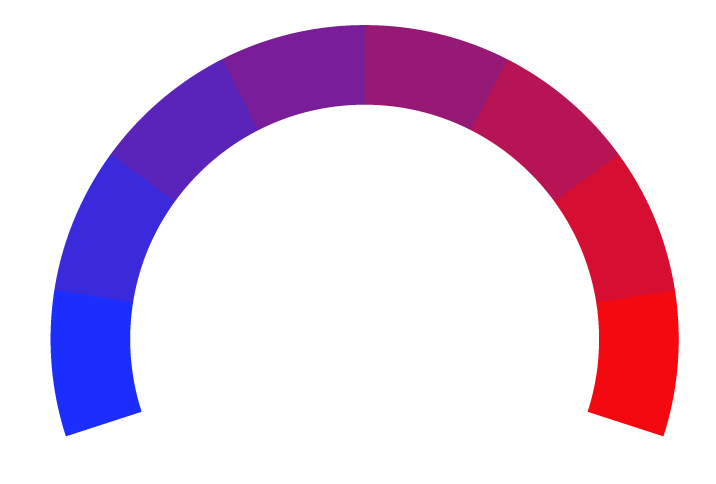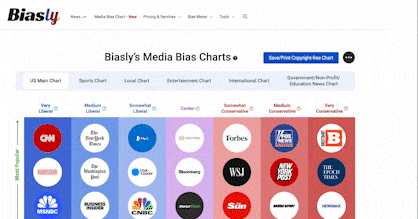Bill Clinton's criminal justice policy leaning was Somewhat Left. While he signed the 1994 crime bill that contributed to mass incarceration, the bill also included some progressive measures like the Violence Against Women Act. Clinton sought to balance tough-on-crime policies with investments in crime prevention and rehabilitation, though the overall impact of the crime bill was to exacerbate the country's punitive approach to criminal justice.
Source: ACLU
www.aclu.org Bill Clinton's economic policy leaning was Somewhat Left. He focused on fiscal discipline, investing in people, and opening foreign markets, which helped spur economic growth and job creation during his presidency. Clinton raised taxes on the wealthiest Americans, expanded the Earned Income Tax Credit, and made investments in education and technology, while also compromising with Republicans on issues like NAFTA.
Source: Clinton White House
clintonwhitehouse5.archives.gov Bill Clinton's education policy leaning was Somewhat Left. He supported expanding access to early education, modernizing schools, increasing investments in educational technology, and improving teacher quality. Clinton also focused on raising academic standards, holding schools accountable for results, and making college more affordable through initiatives like the HOPE Scholarship and Pell Grant expansions. While he compromised with Republicans on some issues, Clinton's overall approach sought to expand educational opportunities and improve outcomes for all students.
Source: Clinton White House
clintonwhitehouse1.archives.gov Bill Clinton's energy policy leaning was Somewhat Left. He supported investing in clean energy technologies, promoting bioenergy and bioproducts, and setting goals to reduce greenhouse gas emissions. Clinton also implemented measures to improve energy efficiency and increase the use of renewable energy sources, while balancing these environmental goals with economic growth.
Source: Clinton Presidential
clinton.presidentiallibraries.us Bill Clinton's policy leaning on government dependency was Somewhat Left. He signed the landmark welfare reform bill in 1996 that aimed to move people from welfare to work, with a focus on promoting personal responsibility and reducing long-term dependency on government assistance. While the bill had some conservative elements, Clinton's overall approach sought to balance work requirements with providing support for low-income families to transition to employment.
Source: Clinton White House
clintonwhitehouse5.archives.gov Bill Clinton's healthcare policy leaning was Somewhat Left. He proposed a comprehensive healthcare reform plan that aimed to provide universal coverage, with an enforced employer mandate and government-regulated insurance markets. While the plan faced significant opposition and was ultimately not enacted, it reflected Clinton's goal of expanding access to affordable, quality healthcare for all Americans.
Source: Clinton Presidential
clinton.presidentiallibraries.us Bill Clinton's immigration policy leaning was Somewhat Left. He supported measures to expand access to citizenship, English language and civics education for immigrants, and opposed efforts to restrict immigrant children's access to public education. However, Clinton also signed the Illegal Immigration Reform and Immigrant Responsibility Act in 1996, which increased penalties and deportations for immigrants who violated immigration laws.
Source: Clinton White House
clintonwhitehouse1.archives.gov Bill Clinton's national security policy leaning was Somewhat Left. He focused on expanding international cooperation and alliances, promoting democracy and human rights, and using military force selectively and cautiously, such as in Bosnia and Kosovo. However, he also maintained a strong military and deterrence posture, and took decisive action against terrorist threats like the bombings of U.S. embassies in Africa.
Source: Clinton Presidential
clinton.presidentiallibraries.us Bill Clinton's policy leaning on reducing the federal budget deficit was Somewhat Left. He pursued an aggressive deficit reduction strategy, cutting the deficit in half within four years through a combination of tax increases and spending cuts. However, Clinton also sought to balance deficit reduction with targeted investments in areas like education, workforce development, and infrastructure to stimulate the economy.
Source: Clinton White House
clintonwhitehouse5.archives.gov Bill Clinton's policy leaning on the war on drugs was Somewhat Left. While he initially maintained a tough-on-crime approach, Clinton later sought to shift the focus towards treatment and prevention, reducing funding for interdiction and law enforcement efforts. However, his administration was criticized for not providing strong leadership or resources to effectively combat the drug problem.
Source: Brennan Carter
www.brennancenter.org
| 























